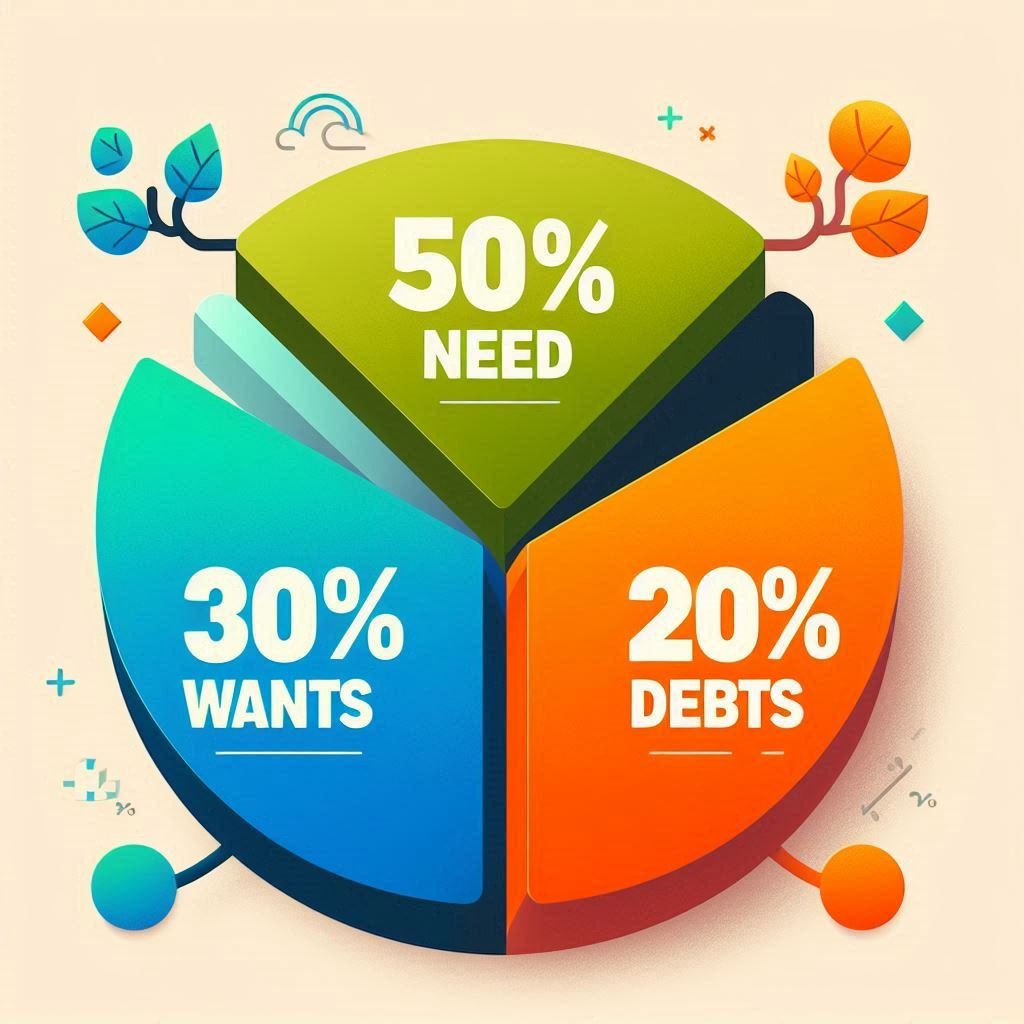Managing money can feel overwhelming, but it doesn’t have to be. The 50/30/20 budget rule offers a simple, practical method to manage your finances effectively—whether you’re just starting out or looking to improve your current financial habits.
This widely-used budgeting strategy breaks down your income into three main categories: 50% for needs, 30% for wants, and 20% for savings and debt repayment. By following this framework, you can reduce financial stress, enjoy your present, and plan wisely for the future.
What Is the 50/30/20 Budget Rule?
The 50/30/20 rule is a money management guideline that allocates your after-tax income into three broad spending categories:
- 50% for essential needs
- 30% for discretionary spending (wants)
- 20% for financial goals (savings and debt repayment)
This approach offers a structured yet flexible way to live within your means, without feeling deprived or overly restricted.

Who Created the 50/30/20 Rule?
The rule was popularized by U.S. Senator Elizabeth Warren and her daughter Amelia Warren Tyagi in their 2005 book, All Your Worth: The Ultimate Lifetime Money Plan. It was developed as a response to the growing complexity of personal finance, offering a simplified approach that anyone can apply.
Breaking Down the 50/30/20 Budget Rule
1. 50% for Essential Needs
Half of your income should go toward essential expenses—these are the must-haves for living and maintaining a basic quality of life.
Examples include:
- Rent or mortgage
- Utilities (electricity, water, heating)
- Groceries and basic household supplies
- Health insurance and out-of-pocket medical costs
- Minimum debt payments
- Transportation (car payments, gas, public transit)
Tips to Manage Essentials:
- Compare utility providers to find better rates.
- Use grocery planning apps or bulk-buying to cut food costs.
- Consider downsizing or living with roommates to reduce housing expenses.
If your essential expenses exceed 50% of your income, look for ways to reduce costs or increase income. High housing or medical expenses are common reasons for exceeding this threshold, so adjusting accordingly is key.
2. 30% for Personal Spending (Wants)
This portion is reserved for non-essential, lifestyle-enhancing expenses—things that bring enjoyment but aren’t necessary for survival.
Examples include:
- Dining out and entertainment
- Hobbies and recreational activities
- Vacations and travel
- Subscriptions and streaming services
- Shopping for clothes, gadgets, or luxury items
Wants vs. Needs:
A helpful tip: if you can live without it, it’s a “want.” For example, cooking at home is a need, but dining out is a want. Be mindful of this distinction when budgeting.
Tips to Stay on Track:
- Prioritize spending on experiences or items that truly bring joy.
- Set limits for impulse purchases.
- Cancel unused subscriptions or memberships.
3. 20% for Savings and Debt Repayment
The final 20% of your income should be allocated toward building financial security—saving for the future and reducing debt.
Start with an Emergency Fund:
Aim to save at least 3–6 months’ worth of living expenses in a high-yield savings account. This acts as a safety net for unexpected situations like job loss or medical emergencies.
Focus on Debt Repayment:
- Pay off high-interest debts first, such as credit card balances.
- Consider debt consolidation to lower interest rates.
- Explore repayment options or refinancing for student loans and mortgages.
Invest for Long-Term Growth:
- Contribute to retirement accounts like a 401(k), IRA, or Roth IRA.
- Set long-term goals such as buying a home or starting a business.
- Use investment apps or consult a financial advisor to grow your money over time.

Why the 50/30/20 Rule Works
Simple Yet Effective
One of the biggest advantages of this rule is its simplicity. By dividing your income into three easy-to-understand categories, you can quickly identify where your money is going and make informed spending decisions.
Adaptable to Any Income Level
Whether you’re a student, a working professional, or running a household, the 50/30/20 rule can be tailored to your situation. As your income changes, the proportional allocations remain the same, keeping your budget balanced.
Supports Long-Term Financial Health
Allocating 20% of your income toward savings and debt repayment fosters consistent financial growth. Over time, this leads to financial freedom, reduced stress, and better resilience in economic downturns.
How to Stick to the 50/30/20 Rule
- Track Your Spending: Use budgeting tools or apps to monitor where your money goes each month.
- Automate Savings: Set up automatic transfers to your savings and investment accounts.
- Reassess Monthly: Regularly review your budget to make sure it aligns with your goals and lifestyle changes.
- Adjust When Needed: Life happens—don’t be afraid to tweak the percentages slightly if it helps you stay committed in the long run.
Final Thoughts
The 50/30/20 budget rule is a powerful tool for achieving financial clarity and control. By focusing on needs, allowing room for enjoyment, and prioritizing your financial future, you create a balanced budget that supports both your current lifestyle and your long-term goals.
Start applying the 50/30/20 rule today, and take one more step toward financial freedom.




